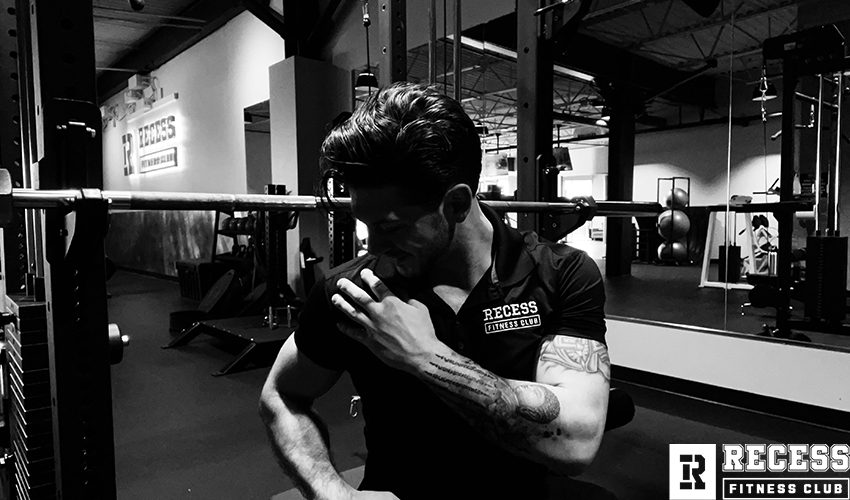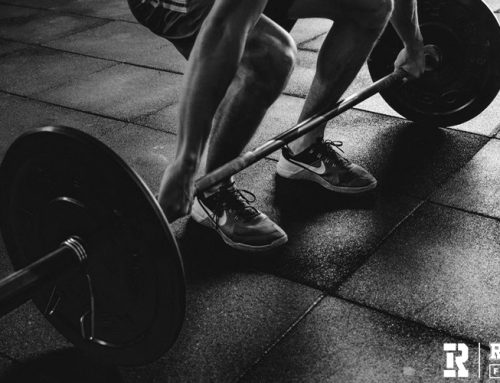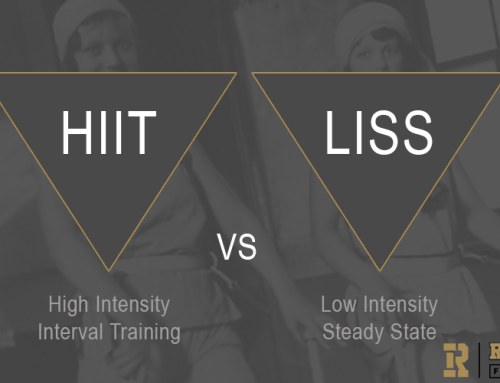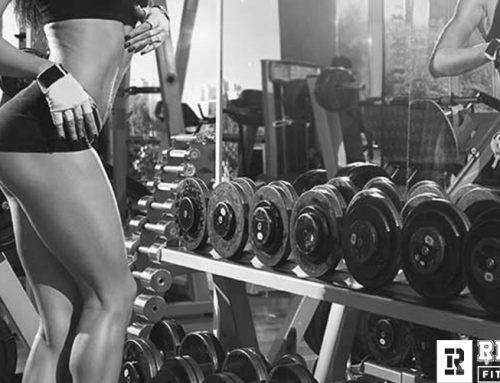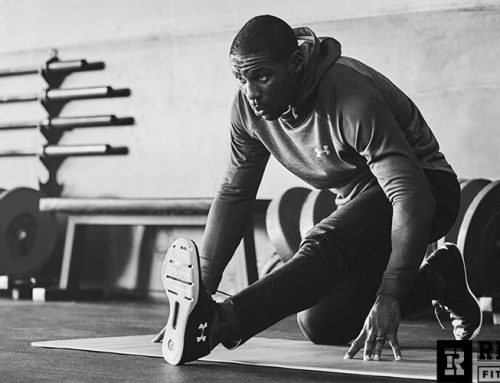If you walk into a gym at 5 o’clock on any Monday evening, you are likely to hear loud grunting accompanied by sweaty men taking up every type of bench press as far away from the cardio equipment as possible. This is chest day and the one universal exercise you MUST DO, is the barbell bench press. Now, the bench press is not a terrible or dangerous exercise on its own, it is simply misused, overused, and misunderstood.
The barbell bench press should be customized to the individual using it and should not be a “one size fits all” exercise. In this article, we will go over common mistakes when pressing with some basic shoulder warmups, and different setups for the bench press.
COMMON MISTAKES & SHOULDER WARMUP:
One of the biggest mistakes I see EVERY SINGLE DAY when people come into the gym, is they do not warm up properly before meandering over to the flat bench press portion of the gym. They will walk straight over to the bench press, load up 135, do 10-20 reps, load up more weight, and progress to near maximum weight until they complain about an injured shoulder one day and why they cannot “hit their max anymore” to their friends or gym bros. I know, I know. That sounds perfectly normal! It must be the bench press that is aggravating their shoulder so they should just work around it or never do bench press again, right? WRONG!
If you were to implement just ONE thing before your pressing, it should be this: anterior, lateral, and posterior shoulder girdle warmups and/or lat activation warmups. If you experience front or lateral (side) shoulder pain, implement a face pull (band preferred or cable if necessary) with a lightweight focusing on squeezing the rear delts and shoulders together behind you. Imagine trying to pinch a pencil between your shoulder blades with every, single repetition. The reason I prefer the banded face pullover a cable or any other piece of equipment is that it allows the user to work the shoulder into humeral, horizontal abduction, and external rotation easier. Elbows up and thumbs driving back and out.
Another variation would be shoulder over & backs. Start by taking a light resistance band, placing your hands inside with your thumbs facing down, palms facing out, and the band in front of your hips. This will bring your shoulders into internal rotation. OH NO! Isn’t that bad?! No. Bring the band slowly over your head to the back of your hips and let your palms face up, thumbs pointing behind you. Make sure you pinch your shoulders together when the band is behind you and do not arch your back. Return to the front and do this 10-15 times. Your goal in this exercise is to rotate the shoulder completely through the socket.
The final warmup would be either a lat pulldown on the cable machine or an inverted row with hands being placed just outside shoulder width apart. For the lat pulldown, place hands slightly wider than shoulder-width apart and use a weight that allows you to focus on ripping the bar apart as you are pulling it down towards your collarbone; elbows will be slightly in front of your body pointing straight down towards the ground, now behind your back. The inverted row setup will use either a smith machine (preferable and safer) or a power rack with the bar set about hip height or higher if you cannot pull yourself up from the low, hip height depth. Lie on the ground under the bar, place your hands slightly wider than shoulder-width apart, and pull your whole body up towards the bar. Make sure your posterior chain stays engaged and you do not bend at the hips. You want to imagine ripping the bar apart with your hands as you pull your chest to touch. Hold the top position for two seconds before slowly lowering to the start position.
DIFFERENT SETUPS:
Another way to relieve pressure off the shoulder complex is to try different angles when pressing. If you have pain when flat barbell bench pressing, that does not mean you have to skip ALL pressing. Find a motion, angle, and weight that works for you and allows you to work out pain-free. Always check your ego at the door, especially when dealing with injuries.
Different variations of pain-free pressing are adding a slight incline to a bench press (10-20 degrees), adding accommodating resistance (bands, reverse bands, chaos banded), floor pressing, or my preference, box pressing, and finally adjusting your grip slightly and using a false grip.
For the slight incline method, you will need to have a specialty bench that allows for smaller increment drops or simply place a weight under the head of the bench angling it slightly upright. Set this up in a power rack so you can get the barbell bench press with free weights.
Another option is using accommodating resistance. This means using either bands to pull the bar down (you will use 50% or less of your max 1 rep for this) or reverse bands where the bands are anchored to the top of a power rack or other stable surface, alleviating pressure and weight at the bottom of the motion, and allowing more to be felt towards the top of the motion once the shoulder is in a better, stable position. The chaos band method is more advanced, and the weight will vary greatly from person to person, but I would recommend starting with 10-20% of 1 rep max and assessing from there. Essentially, you will take plates and instead of placing them on the bar, you will loop and resistance band through them (1 band per plate) and attach the band to the end of the barbell. Farther away will give greater instability while placing closer to the hands will allow the user to control the weight more. This method is terrific for recruiting the smaller stabilizer muscles and helping you “feel” the exercise more and work on engaging the muscles properly.
The third option is to use the floor or a box to press from. The floor press is great because it allows the lifter’s weight to be distributed evenly throughout the body from head to toe. The two options for floor pressing are knees bent with feet on the ground or legs straight and flat on the ground. Knees bent with feet on the ground allow the spine to stay neutral easier, but the user may try to arch their back on the exertion portion of the press, putting the shoulder in a more compromised position and not even getting any additional benefit from the exercise. Legs flat on the ground allow the user’s back to stay flat and disperse the weight more evenly throughout their body. My preferred method is using a box, roughly hip height, instead of the floor. Set this up in a power rack and the lifter will only have the top portion of their body, mid-upper back, and head on the box. This method allows the spine to stay straight and addresses a major issue with the floor press; the lifter is allowed to use glute and leg drive to help transfer power from the ground through the bar for the press. This should also transfer back to the flat bench press since it will reinforce proper engagement throughout the entire posterior chain during the press. Give it a try!
Ultimately, if you are in pain when doing any exercise, there is almost always a workaround or option that will keep you training while you can address those painful issues and that is what we all want. Because being in pain is not dangerous; being weak is.


